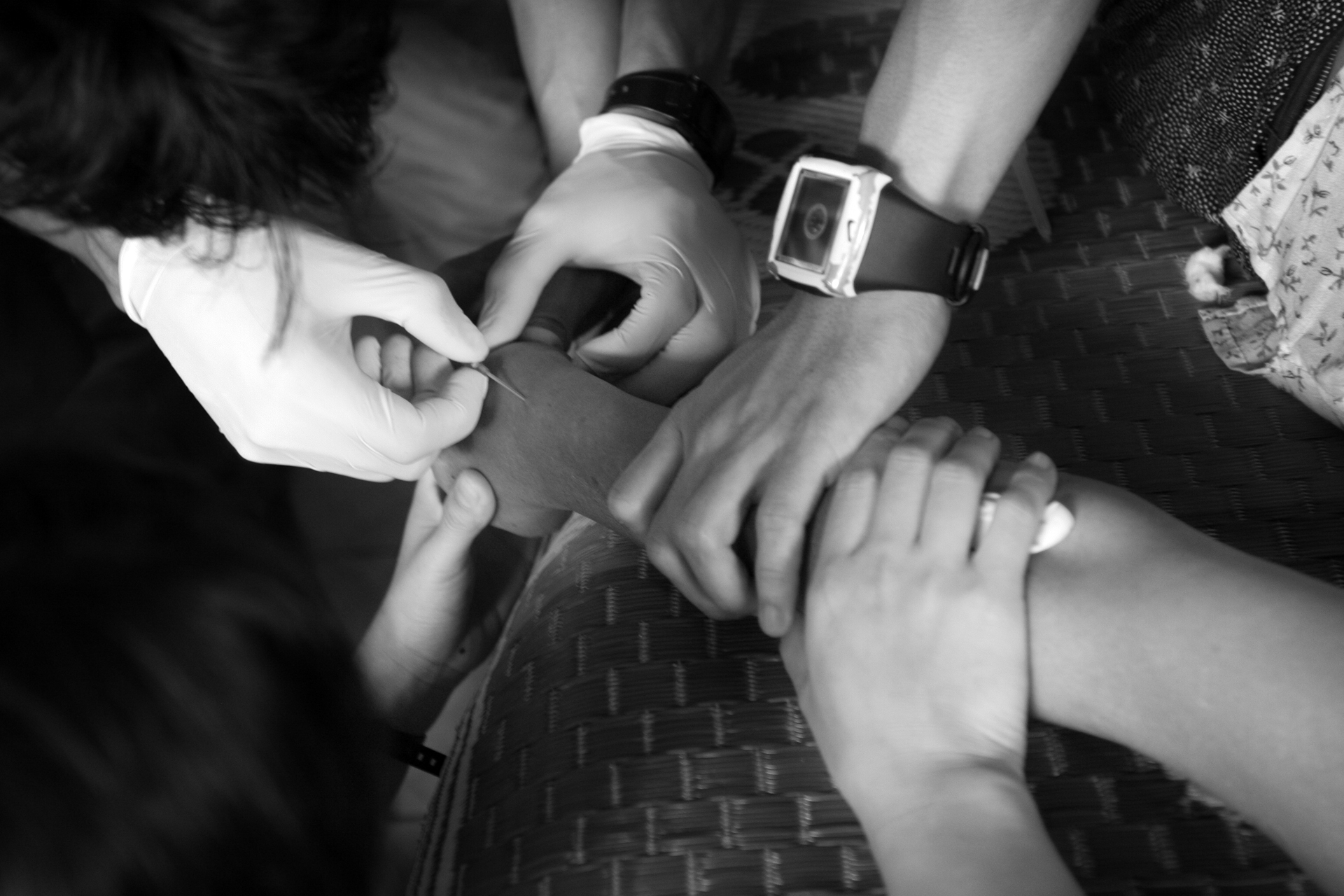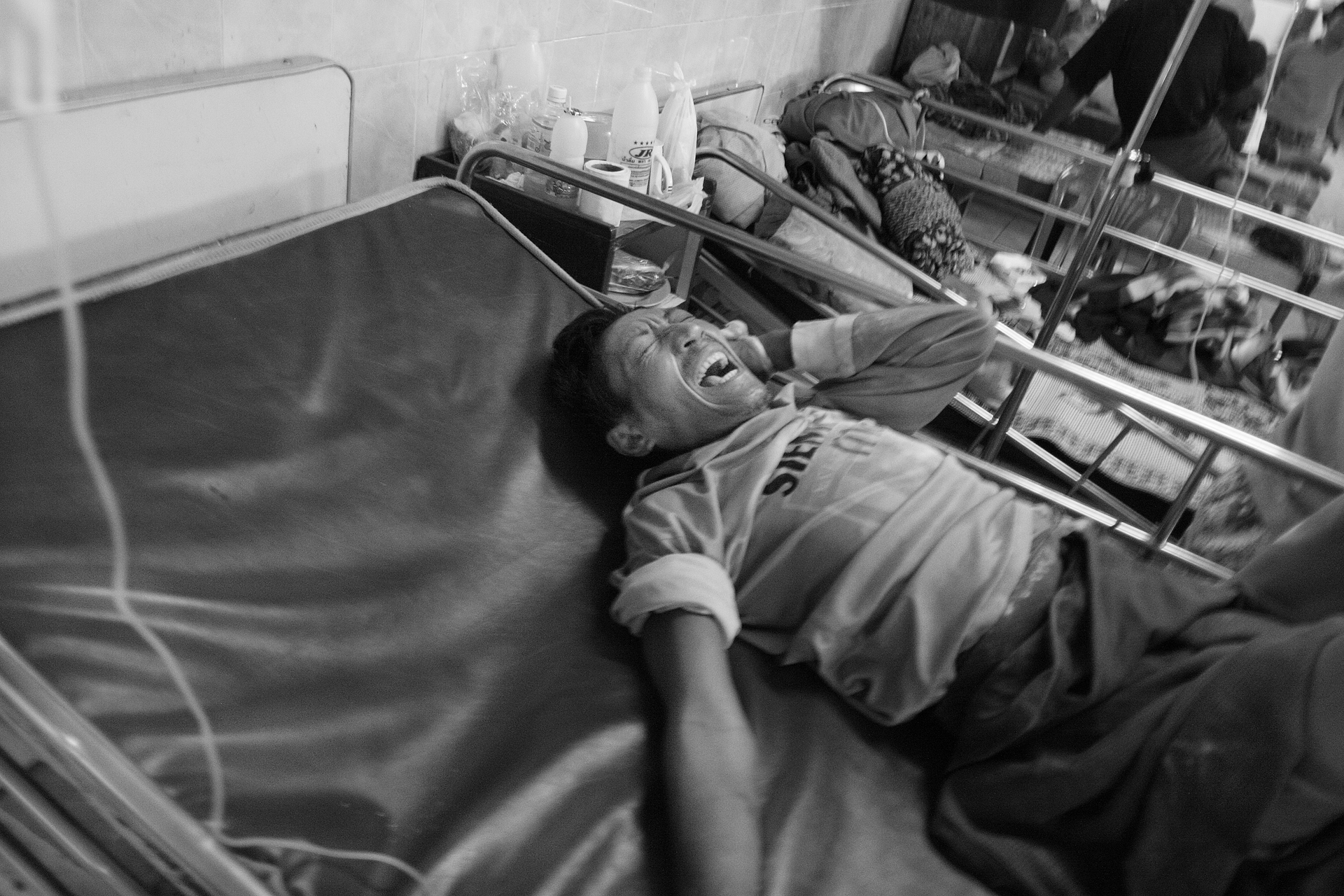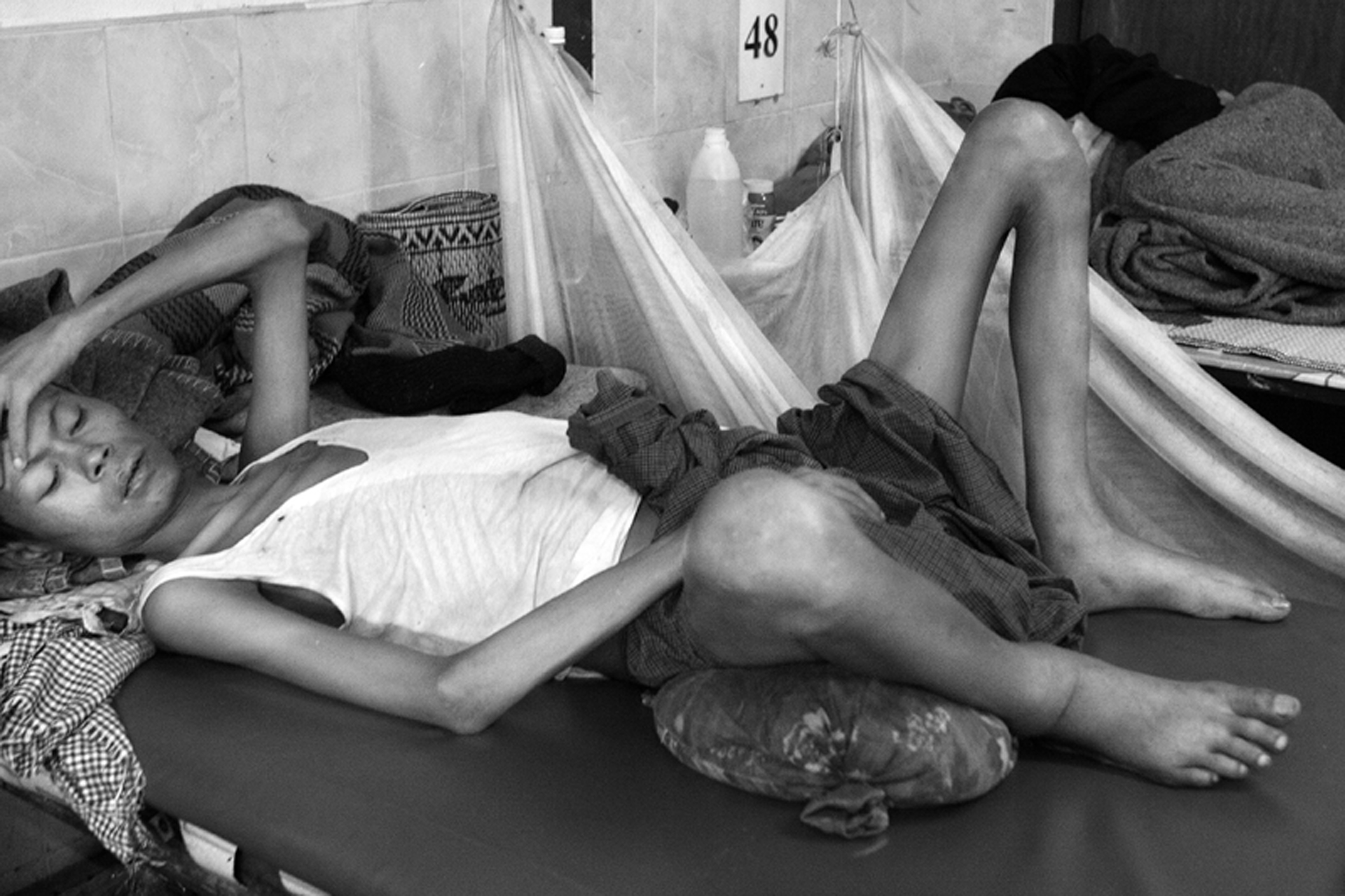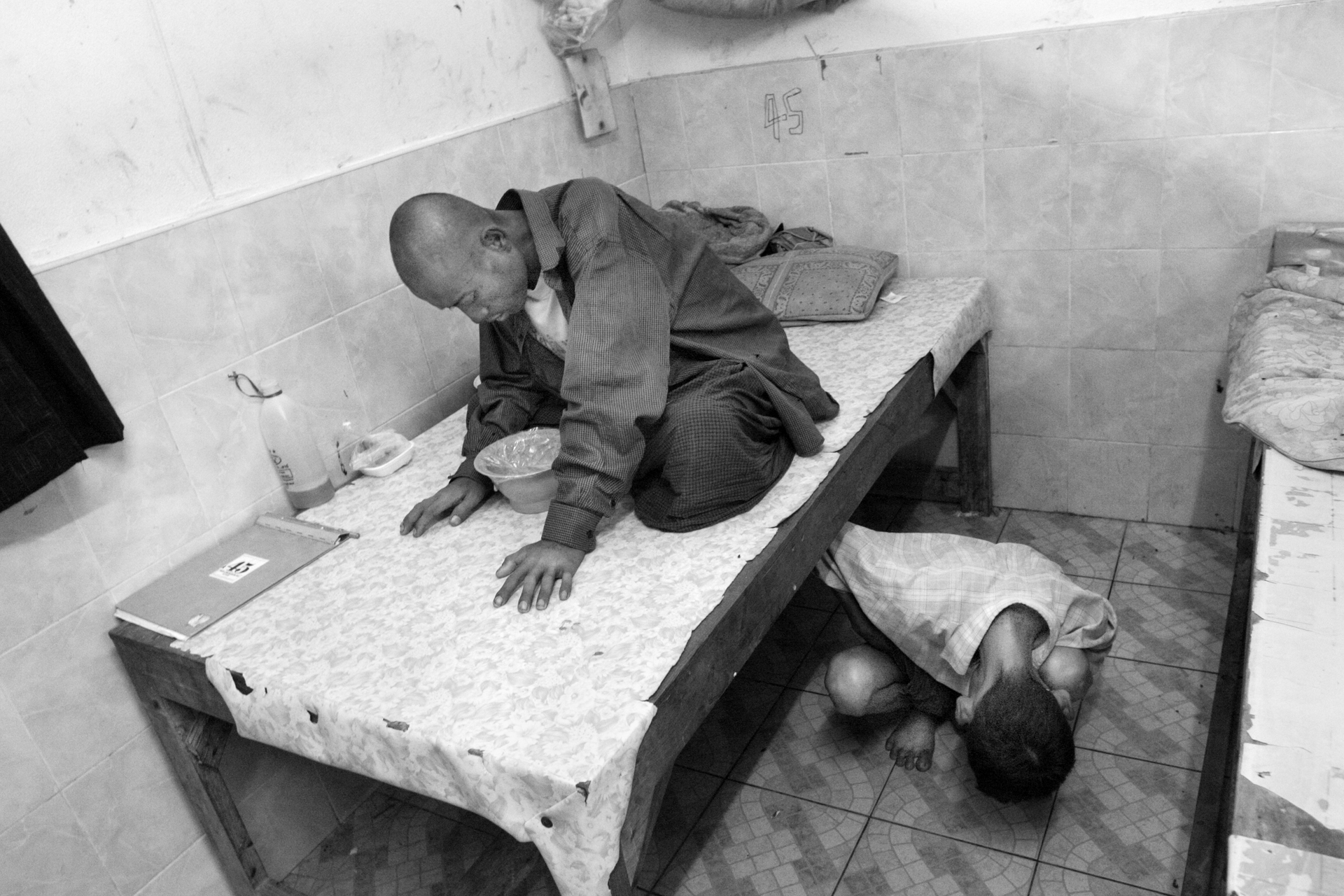0%

One of the gates to MaLae refugee camps where approximately 50,000, mostly Karen, ethnic refugees have lived for the last fifteen years. There are nine other official refugee camps on the Thai side of Burma's eastern frontier that support 150,000 refugees. These are people who are stuck with no means of livelihood. They are dependent upon donors, ranging from the UNHCR to the Canadian International Development Agency, which supports the Mae Tao Clinic, the most most important health provider along this border.

Nearly 1.5 million people have been uprooted from their homes and land by the Burmese military dictatorship, or they have fled from poverty and 80% unemployment. Many live in border camps like Mae La, 60 km north of Mae Sot, Thailand. Here 50,000 people are dependent upon outside donors for all their needs. They are not allowed to travel or grow food. They are unable to work. "Even the Thais restrict the bamboo we can cut for our houses", my young guide, Hoo, tells me. It is the rainy season. Malaria is endemic. They have all had it.
These girls go to school and live in an orphanage dorm, supported by the Umbrella Project, created by two Canadians Kathy and David Downham. Refugees have three options: Stay here, be repatriated to Burma, or maybe be chosen to immigrate to "The West".

The garbage dump for Mae Sot, Thailand, is home to over three hundred migrant people who live off scavenging this border town's garbage. Every morning these "illegals" jostle for position while waiting for the next truck to arrive with its stenchy cargo. Farther down the road I watched an old man sort cardboard, which he sells for five baht (fifteen cents ) per twenty kilos. The only other 'jobs' available to these people are in the hundreds of sweat shops that manufacture export products ranging from clothing, plastic flowers, to electronic components, conveniently located along the border, where most clear (after "security fees", food and a shelf-like bed are deducted), around 1000 baht ($30) per month.
One of the biggest enemies of malaria is early diagnosis, but this is unlikely among transient, undocumented populations, and especially here in the rainy season.

Le Per Her IDP camp. A young man tends communal cooking fires for the student hostel. It looks after the sixty students who are here to get some education - as opposed to no education where they came from - living in the jungle, on the run, further inside rural Burma. Recent studies show that people dislocated from their homes have three times the malaria infection rate.

Mae Tao Clinic: Child Health Outpatient Department. Today it is crowded with women and children who have come for checkups and malaria tests. Along with many other donors, the Canadian International Development Agency contributes to the operations of the Mae Tao Clinic, founded by Dr. Cynthia Maung. When I walked into her Mae Tao Clinic on the outskirts of Mae Sot, less than 5 kilometers to the “Friendship Bridge” over the Moi River to Burma, I was surprised by the number of patients crowded in front of all the departments, and how everything seemed to be so calm and organized. If it weren’t for a few children, out of scores, screaming in the Children’s Outpatient Department near the entrance to the clinic, the chirping and whistling of tropical birds in the trees would have captivated me.

We are traveling along a rough and remote side road that crosses into Burma. The Karen army controls this area of the border. Just inside Burma is an IDP camp (for 'internally displaced people'), where about 100 families live with nothing after having their food stolen and crops burned, fear injury from landmines, are forced into carrying supplies for the Burmese military, or worse. We came here with two medics who work at the malaria clinic in Le Per Her IDP camp. These people are completely at the mercy of authorities. Every time undocumented people travel they risk either being arrested or having to pay off authorities.

Le Per Her is a small camp for internally displaced people, five hours' drive north of Mae Sot; a trip over at least two mountain ranges and down a washed-out road between expansive fields of young corn. The people here had to flee their village when the Burmese attacked and burned them out three years ago.
Once a month babies are brought to the clinic, where they are weighed and a blood sample is analyzed to detect any plasmodium parasites. Out of 26 children seen by the medics this day, 14 had malaria. Held close by her father, this young girl was one of the few showing any symptoms.

Mae Tao Clinic. A father watches through the window of the malaria ward. He brought his boy three times from their village across the river in Burma. His son is barely conscious, and one of three people admitted so far today. Last year the Mae Tao Clinic employed 200 workers, maintained 120 inpatient beds, and treated over 100,000 patients. Over the years the clinic has trained hundreds of health care workers, often through the work of international volunteers.

Shoklo Malaria Research Unit, Mawker Thei malaria clinic. Zo Zo is 26 years old and was brought in by his father from a village across the river. The plasmodium parasites have impaired his liver function. His urine is full of blood.
Margos, the young doctor from Holland who attends Zo Zo, is relieved to find that the apparent blockage was in the line, and not in the patient, who will be transferred to the Mae Tao clinic for a blood transfusion. Zo Zo is unconscious. Without a blood transfusion he will probably die. He was almost here too late.
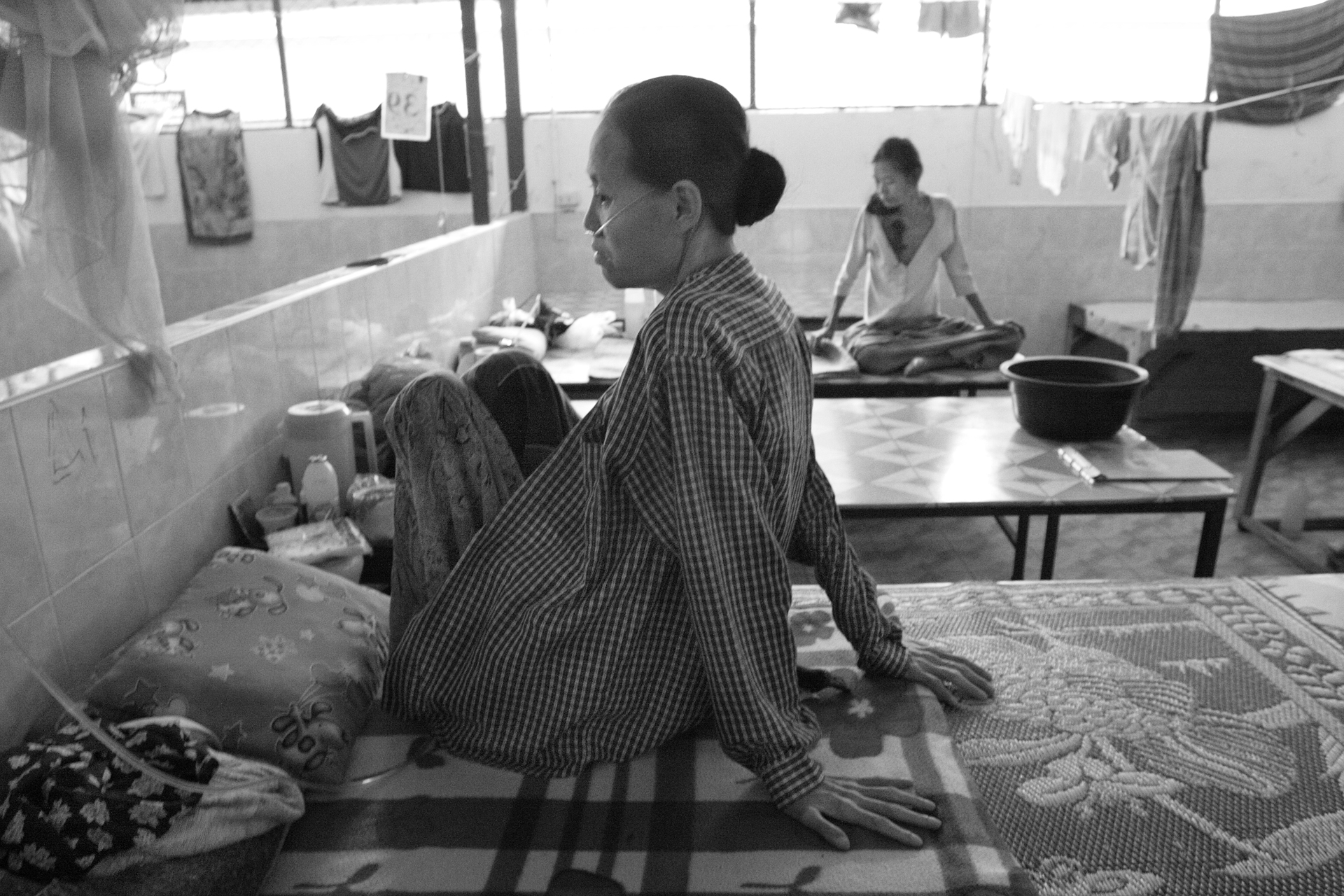
Mae Tao Clinc, Mae Sot. The woman in the foreground is from Mae La camp, one of ten official refugee camps on the Thai side of the border. A young medic asks her some questions for me. The woman has had malaria many times. Now she also has tuberculosis. She has no money. Fortunately Dr. Cynthia's clinic feeds the patients and their families twice a day.
The Mae Tao clinic treats over one hundred patients every year, the vast majority of whom are illegal migrants. Most come from far away inside rural Burma.

These children were playing on the walkway between two wards in Dr. Cythian Maung's clinic for refugees in Mae Sot, Thailand. Here, when a patient is admitted, it is as likely as not that the whole family comes along.
It is common to see people looking after children while parents lie sick on the hard bamboo beds in nearby wards. Twenty years ago I met Dr. Cynthia when she first set up a clinic on the border. Today over two hundred trained people serve thousands of patients every month. She has volunteers visiting from around the world, and donors that include the Canadian International Development Agency.

Shoklo Malaria Research Unit (SMRU), Mawker. A Thai clinic on the bank of the Moi River, and the border between Burma and Thailand, about one hour drive south of Mae Sot. A boat brings people across the river to the clinic for 5 Baht (15 cents). There is no visible security here. This border, like the hundreds of "unofficial" border crossings, is porous for those seeking medical help, or who pay and understand the local power struggles that pervade this remote, war-torn territory. Today mothers and expectant mothers receive ultrasound and blood tests for "on the spot" malaria diagnosis. Some are participating in long-term studies of cardiac and other problems associated with repeated bouts of malaria. Sterlizing mosquitos is simply not practical, says Prof. Francois, the Director of SMRU and an expert on malaria, especially here at the epicenter of the world's most resistant plasmodium parasites. "One very practical solution is to detect and treat it before symptoms show."

Shokalo Malaria Research Unit, Wang Pang, a clinic on the border between Burma and Thailand. A 26-year-old Karen refugee fleeing Burma was brought to the clinic this morning by relatives, who carried him for four days from an Internally Displaced Persons camp inside Burma. Afraid to use his real name, he calls himself Zo Zo. He waits for the results of his blood test, which will determine how severe his malaria is and his treatment. He ends up needing a blood transfusion to save his life.






